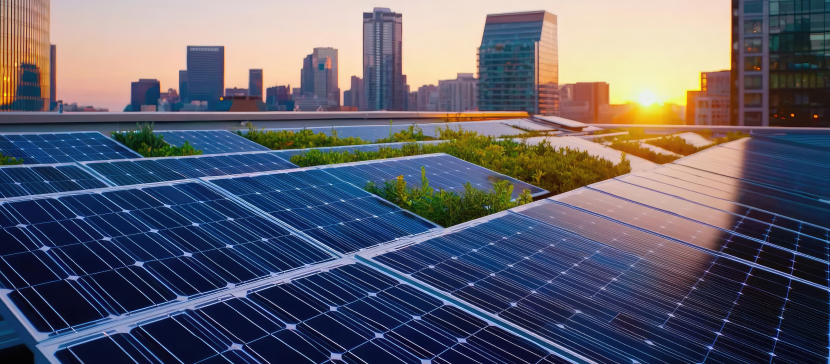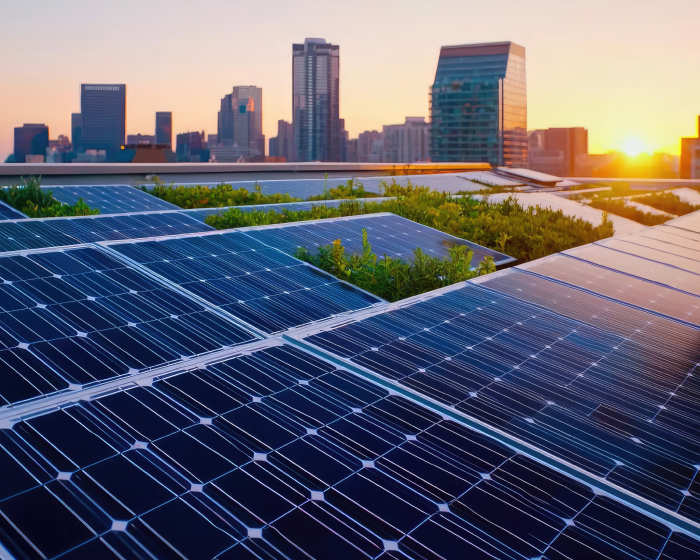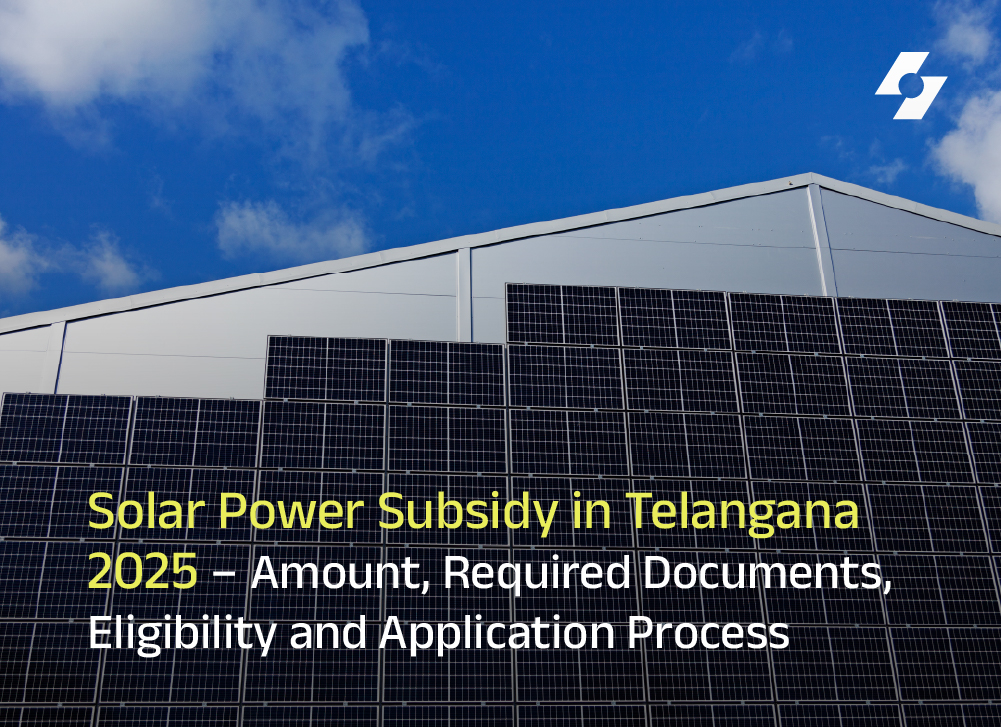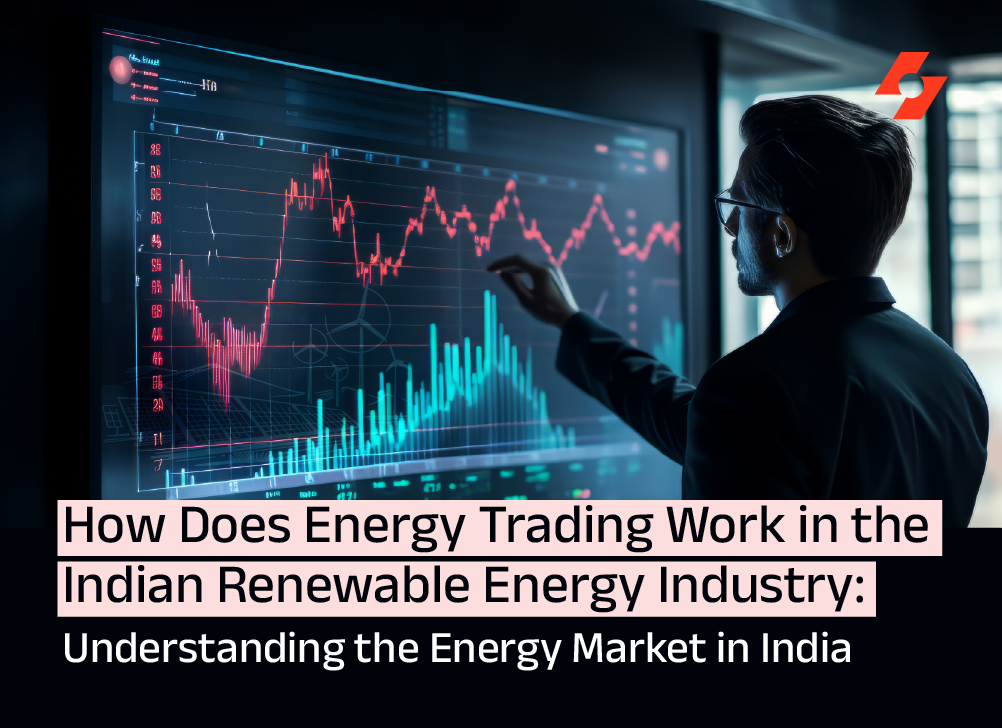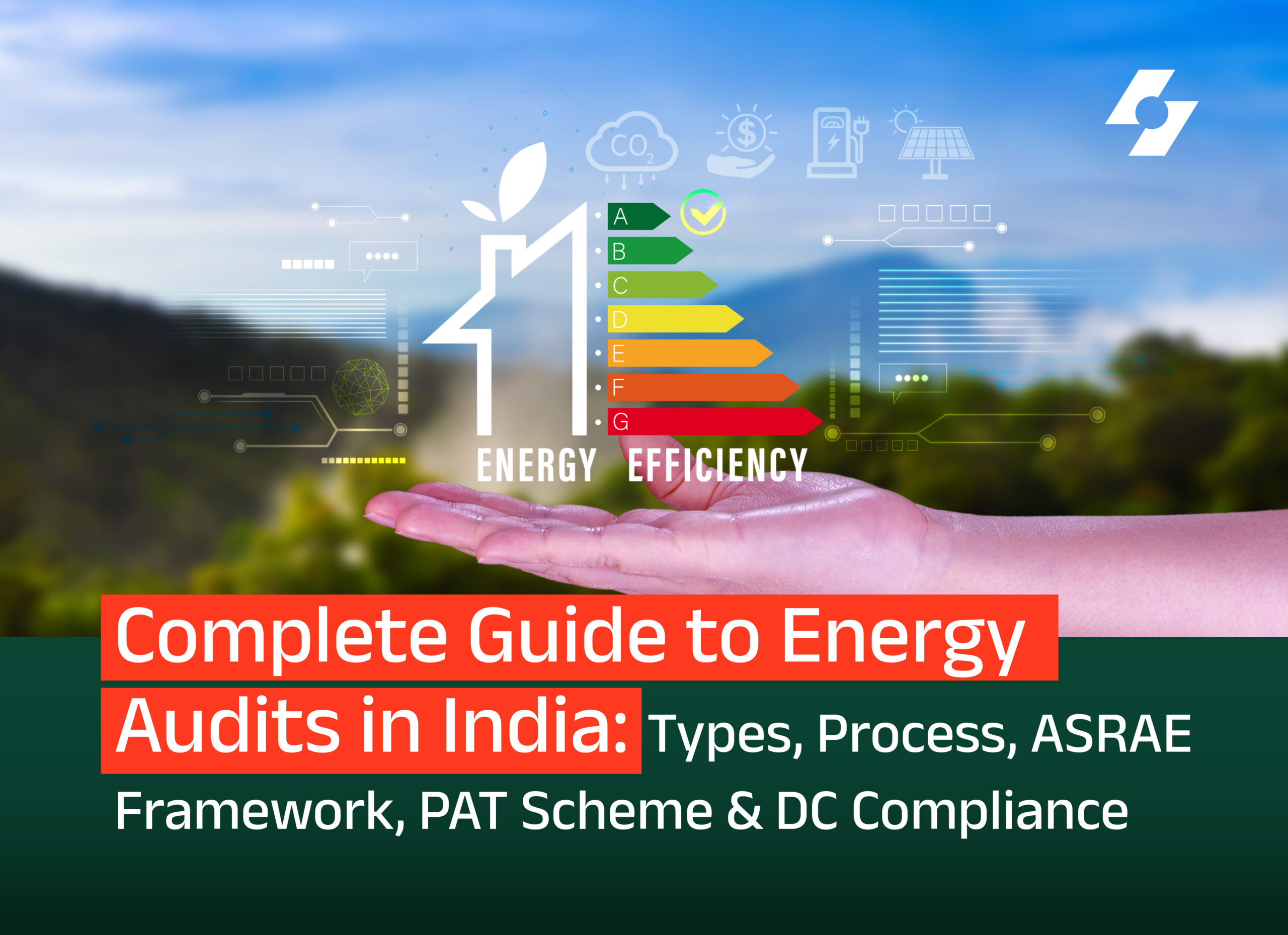Solar energy is no longer an emerging alternative – it’s a mainstream, rapidly expanding solution to the world’s growing power demands. As of April–May 2025, India’s total installed solar capacity is approximately 108–111 GW, with rooftop solar contributing around 18–19 GW, according to MNRE. Globally, solar energy is now one of the cheapest source of electricity in many regions, driven by falling panel costs, policy support, and technology innovation.
For households and businesses alike, this shift means one thing: maximising return on solar investments is more critical than ever. Whether the goal is reducing electricity bills, improving sustainability performance, or achieving energy independence, selecting the right solar technology is key. With multiple types of solar panel available – each offering unique benefits in efficiency, cost, and performance – an informed choice can significantly impact both long-term savings and system output.
With different types of solar panels available in the market, selecting the best one can be difficult. A clear understanding of each panel’s advantages and drawbacks will help companies choose a system that meets their energy requirements and provides the best value.
This blog offers a practical breakdown of the various types of solar panel, including a detailed comparison between monocrystalline and polycrystalline options. It explains the strengths, limitations, and best-use cases for each type – helping you evaluate what suits your site, scale, and budget. Whether you’re exploring solar panels for a rooftop installation or planning a commercial deployment, this guide will help you understand which solar panel type is best and why.
What is a Solar Panel?
A solar panel is a device which converts sunlight into electricity. The key component which performs this conversion is the solar cell. A solar cell makes use of the photovoltaic effect to generate electricity.
In simple terms, when sunlight strikes a solar panel, the photons in the sunlight displace the electrons in the solar cells. It is this movement of electrons which creates solar electricity.
Also Read: State-wise Solar Energy Potential In India
What Are the Different Types of Solar Panels for Industrial Use?
There are 6 types of solar panels which can be used for rooftop or commercial purposes. They are–TOPCon, mono-PERC, monocrystalline, polycrystalline, thin-film, and bi-facial solar panels.
1. TOPCon Solar Panels
TOPCon (Tunnel Oxide Passivated Contact) technology represents an innovative approach to solar cell design.
The core principle behind TOPCon is the insertion of an ultra-thin silicon oxide (SiO₂) layer between the silicon and the metal contacts. This layer, only a few nanometers thick, acts as a passivation layer. It blocks certain charge carriers and reduces recombination— a major source of performance degradation.
Despite its insulating properties, the layer’s extreme thinness allows current to pass through via quantum tunnelling. This “tunnel layer” is paired with a highly doped silicon layer to enhance conductivity and minimize transmission losses, further boosting cell efficiency. It is one of the best among the different types of solar panels available for commercial use.
Advantages:
- Exceptional Efficiency: TOPCon modules achieve efficiencies exceeding 22%. It is a notable improvement over the typical 18% efficiency in PERC panels.
- Enhanced Energy Production: Beyond achieving impressive efficiencies in laboratory settings (Standard Test Conditions), TOPCon technology also performs exceptionally well in everyday conditions (Nominal Module Operating Temperature).
- Improved Thermal Performance: TOPCon solar panels suffer much less energy loss at high temperatures compared to other solar panels.
- Minimal Degradation: The effective rear-side passivation in TOPCon cells significantly reduces light-induced degradation (LID) to very low levels. Coupled with high-quality manufacturing processes, these cells can achieve an annual performance degradation rate of less than 0.25%.
2. Mono-PERC Solar Panels
PERC or Passivated Emitter and Rear Cell solar panels are a superior, modified version of monocrystalline solar panels. They feature a passivation layer on the back of each cell. This coating acts like a mirror. It reflects light which passes through the solar cells back for better energy capture. The layer also facilitates better electron movement by minimizing electron recombination.
It also reduces heat generation by reflecting specific wavelengths of light away from the panel’s rear. These combined effects result in higher energy output and superior efficiency of PERC solar panels.
Advantages:
- Superior Energy Absorption: Mono-PERC solar panels have higher efficiency and output compared to traditional solar panels.
- Increased Savings and ROI: Though they are slightly more expensive compared to monocrystalline solar panels, they generate much greater savings and ROI.
3. Monocrystalline Solar Panels
Monocrystalline solar panels are often referred to as single-crystal panels. They are crafted from a single, high-purity silicon crystal that is sliced into thin wafers. Their distinctive dark black colour and rounded edges make them easily recognizable.
The solar cells in these solar panels are equipped with half-cut technology. It ensures that even if a part of the solar panel is covered by shadow, the rest of the panel continues to produce electricity.
Advantages:
- Efficiency: The efficiency of monocrystalline solar panels can go beyond 20%.
- Longevity: These solar panels can work for more than 25 years.
- Space-Efficiency: Monocrystalline solar panels occupy less space than polycrystalline solar panels to generate the same amount of electricity.
- Good Efficiency at High Temperatures: The temperature coefficient of monocrystalline solar panels is relatively low. It means that their power output declines much less at higher temperatures compared to polycrystalline solar panels.
4. Polycrystalline Solar Panels
The solar cells in a polycrystalline solar panel are square-shaped and have a blue colour. Unlike monocrystalline solar panels are made from several fragments of silicon crystals. That’s why, they are also known as multi-crystalline solar panels.
The cost of melting multiple fragments is lower than the cost of manufacturing from a single crystal. Thus, the cost of polycrystalline panels is lower than that of monocrystalline solar panels.
However, there is a trade-off. The efficiency of polycrystalline panels is slightly lower than that of monocrystalline panels. This is due to the lower silicon purity in polycrystalline panels compared to monocrystalline panels. But the difference in power output is not drastic. You can choose between either of these types of solar modules depending on your requirements.
Advantages:
- Affordability: Polycrystalline solar panels are more affordable than monocrystalline solar panels.
- Good Power Generation: Though less efficient than monocrystalline solar panels, their power generation is good enough to meet industrial requirements. This is especially relevant if the area required to install the solar panel is not an issue.
5. Thin-Film Solar Panels
Thin-film solar panels are distinguished by their portability and flexibility. They can be 350 times thinner than crystalline solar panels. The solar cells in thin-film solar panels comprise either amorphous silicon (a-Si), copper indium gallium selenide (CIGS) or cadmium telluride (CdTe), deposited on substrates such as glass, metal or plastic.
It is important to note that they are much less space-efficient than crystalline solar panels. If you want to install them for a commercial purpose, you must install them over a large area. Their lifespan and warranties are also less compared to crystalline solar panels. They are more affordable than polycrystalline and monocrystalline solar panels.
Advantages:
- Flexibility: Their flexibility makes them suitable for a variety of applications. For example, they can be integrated into walls and glass windows.
- Lower Cost: Because of lower manufacturing costs, thin-film solar panels are more affordable than crystalline solar panels.
- Good Performance in Low Light: Thin-film solar panels are noted for their good performance in low-light conditions.
- Ease of Installation: Thin-film solar panels are much easier to install than regular solar panels.
6. Bifacial Solar Panels
Bifacial solar panels can absorb sunlight from the front as well as the rear. To allow sunlight to enter from the rear, they have a glass or transparent back sheet at the rear. TOPCon and mono-PERC solar panels are available as bifacial solar panels. Out of all the types of solar panels, this one offers a unique advantage.
Advantages:
- Greater Output Than Monofacial Panels: Since they absorb sunlight from the rear as well, they can generate more power than monofacial solar panels.
Quick Comparison Between All 6 Types of Solar Panels in India
Here’s a table to discuss solar panel types comparison:
| Solar Panel Type |
Cost |
Efficiency |
Appearance |
Advantages |
Disadvantages |
| N-Type TOPCon Bifacial |
Slightly higher than mono-PERC |
27% to 30% |
Black colour with rounded edges in solar cells |
High power output and high space efficiency |
High cost |
| Mono-PERC Bifacial |
Medium |
24% to 28% |
Black colour with rounded edges in solar cells |
High power output and high space efficiency |
High cost |
| Mono-PERC Monofacial |
Medium |
20% to 22% |
Black colour with rounded edges in solar cells |
High power output and high space efficiency |
High cost |
| Monocrystalline |
Medium |
15% to 24% |
Black colour with rounded edges in solar cells |
High power output, longevity, low temperature co-efficient |
Higher cost than polycrystalline panels |
| Polycrystalline |
Lowest |
13% to 16% |
Blue colour, no rounded edges in solar cells |
Highly Affordable |
Lower power output, high-temperature coefficient |
| Thin-Film Solar Panel |
N/A |
6% to 18% |
Sleek with blue or black colour |
Highly flexible, can be used over a variety of surfaces |
Low efficiency and short lifespan |
Cost of Different Types of Solar Panels in India
Here’s a price table showing the price comparison of the different types of solar panel in India:
| Type of Solar Panel |
Cost of Solar Panel |
| N-Type TOPCon Bifacial (570 W) |
Rs. 13,000 to Rs. 14,000 |
| Mono-PERC Half-Cut Bifacial Solar Panel (540 W) |
Rs. 12,000 to Rs. 13,000 |
| Mono-PERC Half-Cut Monofacial Solar Panel (540 W) |
Rs. 11,500 to Rs. 12,500 |
| Monocrystalline Monofacial Solar Panel (540 W) |
Rs. 8,000 to Rs. 12,000 |
| Polycrystalline Monofacial Solar Panel (330 W) |
Rs. 6,500 to Rs. 9,000 |
| Thin-Film Solar Panel |
N/A |
Which Type of Solar Module Should You Use for Commercial Purposes?
There are several factors to consider while considering which types of solar panel is best. Here are some of the major ones:
- Space-Constrained Installations:
For properties with limited space, prioritizing efficiency is crucial. Mono-PERC solar panels offer the highest power output per square foot. This maximizes energy generation and minimizes land use, leading to significant long-term savings.
While polycrystalline panels have a lower upfront cost. For low efficiency, it requires a larger installation area. This can increase labour costs and potentially offset initial savings. Consider the long-term implications of reduced energy output and the potentially higher cost of maintenance.
- Thin-film Solar Panels as Alternatives to Traditional Solar Panels:
Thin-film solar panels are ideal for challenging installations where traditional crystalline silicon panels are impractical. This includes:
1. Space-restricted locations: Commercial buildings with limited roof space, recreational vehicles, and watercraft.
2. Flexible installation needs: Applications requiring panels to conform to irregular surfaces.
3. Roofs without the strength to hold heavy solar panels: If you have a roof which does not have the strength to hold heavy solar panels, it will be more feasible to install flexible solar panels.
4. Avoiding Labour-Intensive Installation: Thin-film solar panels are ideal for situations where it is unfeasible to do intensive labour of installing a mounting structure and setting up solar panels.
Remember that solar panels are a long-term investment (typically 25 years). Thoroughly research different panel types to ensure the best fit for your specific needs and budget.
Conclusion
In conclusion, deciding which type of solar panel is best for commercial use is a critical decision. It can significantly impact energy efficiency, cost-effectiveness, and overall return on investment. Different types of solar panels each come with their unique advantages and limitations.
You need to consider a range of factors, including energy consumption, budget, and local climate, before selecting a solar panel. It is crucial to consult experts and conduct in-depth research before making a decision.
